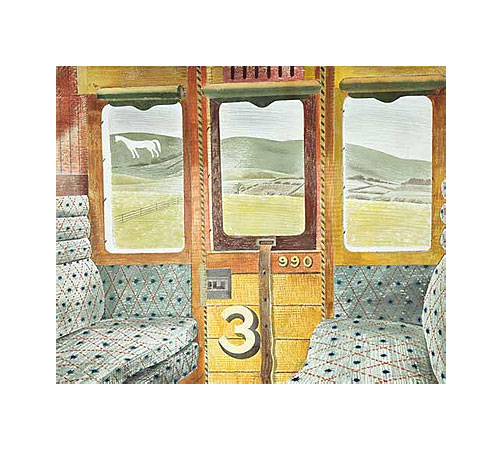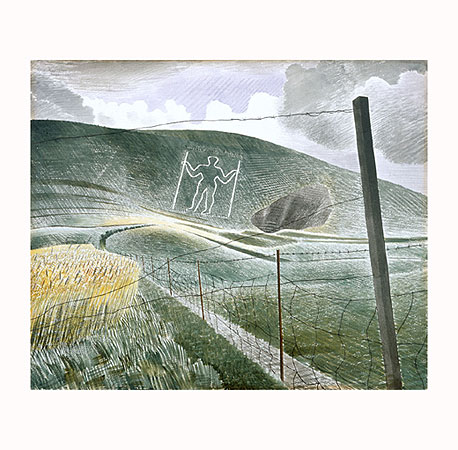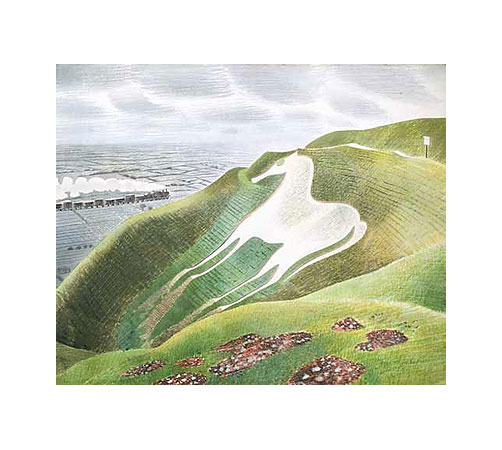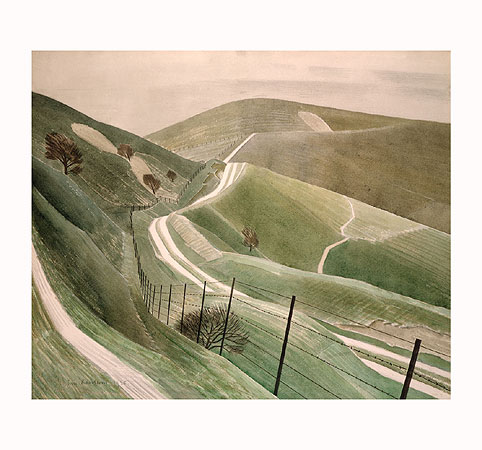ERIC RAVILIOUS
May 30th, 2009 adminI recently visited the Towner Art Gallery in Eastbourne, which opened on April 4th after relocating to a wonderful new building designed by Rick Mather Architects, having outgrown their original building. It’s well worth a visit. In the main space they’re currently exhibiting work by Ivan Navarro – sinister anthropomorphic neon relief sculptures, based on the Olympic pictograms designed by Otl Aicher in 1972.
The gallery first opened in 1923 and curator Arthur Reeves Fowkes was appointed to oversee the expansion of the collection. Under his leadership, a ‘Pictures of Sussex’ policy was developed. The Corporation of Eastbourne funded the acquisition of paintings of the local landscape, ‘in order to provide the visitor with a complete review of this beautiful country.’ An unrivalled collection of paintings, drawings and watercolours was gradually accumulated. The first floor of the new gallery is devoted to pieces from this permanent collection. It includes work by the renowned English painter Eric Ravilious (father of James Ravilious, the photographer whose work I discussed on the blog here).

Train Landscape, 1939 © Estate of Eric Ravilious/ Prints of this image can be obtained from Book Room Art Press
Ravilious studied at Eastbourne School of Art, and at the Royal College of Art, He began his working life as a muralist, first coming to notice as an artist in 1924. He went on to become one of the best-known artists of the 1930s including working as an Official War Artist during the Second World War. He was killed on active service.
A retrospective of his work called Imagined Realities at the Imperial War Museum in 2003, examined Ravilious’s contribution to British cultural life between the Wars and during the first years of the Second World War. As John Russell Taylor wrote in The Times, “Ravilious shines out for his distinctive vision, at once suspicious of and enthralled by the romantic spectacle associated with war. And curiously, this romantic duality proves to be right at the heart of a traditional, non-chauvinistic sort of Englishness. Englishness is, for once, the word….he was English to his deepest roots, and was turned on as an artist exclusively by the English scene, the sweep of English history, the little eccentric details of English life.”

The Wilmington Giant, 1939 © Estate of Eric Ravilious/ Prints of this image can be obtained from Book Room Art Press
Some of Ravilious’s most deeply imagined Spirit-of-England work is connected with the ancient chalk figures inscribed on southern hills, such as The Wilmington Giant and The Westbury Horse.

The Wesbury Horse, 1939 © Estate of Eric Ravilious/ Prints of this image can be obtained from Book Room Art Press

Chalk Paths, 1935. © Estate of Eric Ravilious/ Prints of this image can be obtained from Book Room Art Press
“In his watercolours, he observed and recorded the relationship between the modern world and the English landscape in a style that was both formal and yet deeply felt. His work as a designer helped to define traditions of English culture of the period.”
There is an extenstive discussion of Ravilious work on the Imperial War Museum website here.
Prints of Ravilious’ images can be obtained from The Kemp Town Bookshop, Brighton, Tel: 01273-682110.

